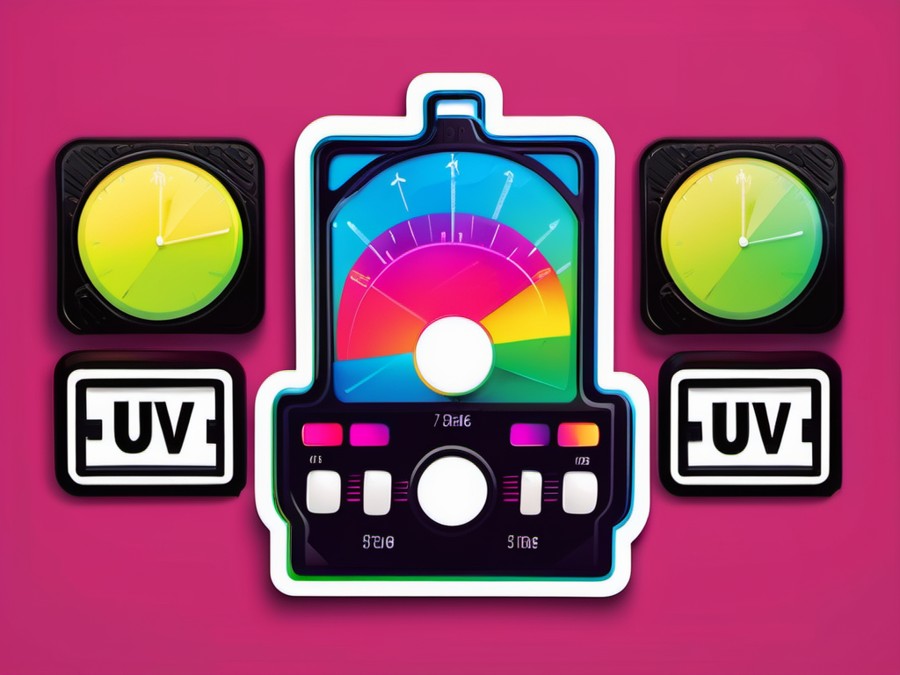· Charlotte Will · Light Meters & Accessories · 8 min read
What is an Incident Light Meter and How to Use It?
Discover how an incident light meter can enhance your photography skills and achieve perfect exposures every time. Learn what they are, how to use them effectively, and why professionals still rely on these tools in the digital age. Get practical tips and debunk common myths to make the most of your incident light meter.

Understanding the Basics of Incident Light Meters
What is an Incident Light Meter?
An incident light meter is a crucial tool in photography that measures the amount of light falling on a subject. Unlike reflective meters, which measure light bouncing off a surface, incident meters provide a direct reading of the available light, making them invaluable for accurate exposure calculations. This simple yet powerful device is especially favored by professional photographers and filmmakers to ensure precisely balanced exposures in varied lighting conditions.
Source: What is a Light Meter and Why Do You Need One?
Difference Between Incident and Reflective Light Meters
The primary distinction between incident and reflective meters lies in their measurement method. Reflective light meters assess the amount of light reflected off a subject back to the meter. This method can be influenced by the surface’s reflectivity, potentially leading to inaccurate readings.
In contrast, incident light meters measure the light falling directly onto the subject. This direct measurement is considered more accurate as it isn’t impacted by surface reflectivity, making incident meters ideal for precise exposure calculations.
Source: What is a Darkroom Light Meter and How to Choose the Right One?
Importance of Incident Light Meters in Photography
Incident light meters are essential for achieving consistent and accurate exposures across various lighting scenarios. They are particularly useful in situations with challenging or mixed lighting, such as using flash in combination with natural light. By providing a direct measurement of the light intensity, incident meters help photographers avoid common pitfalls like underexposed or overexposed images.
Source: What is Red Light Photography and How to Use It in a Darkroom?
How Incident Light Meters Work
Measuring Incident Light
Incident light meters typically feature a white dome that diffuses the incoming light. Inside, a sensor measures the intensity of this light. The readings are then converted into exposure values (EV) that can be translated into aperture, shutter speed, or ISO settings. This straightforward process ensures that the photographer captures the scene with the correct exposure.
Impact on Exposure Calculation
The readings from an incident light meter directly influence the exposure settings of your camera. By understanding the recommended aperture, shutter speed, and ISO based on the incident light meter’s readings, photographers can achieve balanced exposures regardless of the subject or lighting conditions.
Calibration for Accuracy
Like any precision instrument, incident light meters need periodic calibration to maintain accuracy. Regular checks against known standards ensure that the meter isn’t drifting, protecting your exposures from subtle deviations. Most high-quality meters come with instructions for calibration, making this a straightforward process.
Source: What is the best blank video media for vintage camcorder use?
Choosing the Right Incident Light Meter
Factors to Consider When Buying an Incident Light Meter
When selecting an incident light meter, consider factors such as budget, specific features, and brand preferences. High-end models often come with additional capabilities like flash integration or advanced exposure modes, which can be beneficial for professional work.
Top Incident Light Meters for Photographers
Some of the top incident light meters available include:
- Sekonic L-308X: Known for its durability and advanced features, including a data storage function.
- Kenko KFM-1100: A more affordable option with a user-friendly interface and accurate readings.
- Polaroid 660: A classic choice that has stood the test of time, popular among film photographers.
Incident Light Meters for Beginners vs Professionals
Beginner photographers may find entry-level incident meters sufficient for starting out. These often come with simpler interfaces and essential features at a lower cost. However, as skills advance, investing in a high-end meter with advanced capabilities can elevate the quality of your work.
Source: What is a Ring Light Flash and Why is it Essential for Portraits?
How to Use an Incident Light Meter Effectively
Preparing Your Light Meter
Before using your incident light meter, ensure it is properly calibrated and batteries are fresh. Familiarize yourself with the essential controls to avoid any delays during a shoot. Keeping your meter in good working condition is key to reliable readings.
Taking Measurements with an Incident Light Meter
- Place the Meter: Position the meter’s dome toward your subject, ensuring it faces the same light source as they do.
- Take a Reading: Press the button to take a measurement. The meter will display the recommended exposure settings based on the incident light.
- Adjust Settings: Convert these readings into your camera’s exposure settings (aperture, shutter speed, ISO).
Interpreting the Readings
Incident light meters typically provide exposure values (EV) that correspond to a particular combination of aperture, shutter speed, and ISO. Understanding these values helps you translate the meter’s recommendations into actionable settings for your camera.
Practical Tips for Consistent Results
- Avoid Direct Sunlight: While measuring, avoid placing the meter in direct sunlight as it can adversely affect readings.
- Use a Gray Card: For consistent color balance, utilize a neutral gray card when taking incident readings.
- Check for Filters: Remember to account for any filters on your lens when adjusting settings.
Source: What is the Most Durable Body Mounted Camera for Outdoor Use?
Common Misconceptions About Incident Light Meters
Myths Debunked
One common misconception is that incident meters are obsolete in the digital age. However, their ability to provide direct light measurements remains invaluable for ensuring precise exposures. Modern digital photographers still rely on incident meters to achieve the same accuracy that has been standard in film photography for decades.
Real-World Examples of Incident Light Meters in Action
In professional settings such as weddings or fashion shoots, incident meters are often used to ensure that the entire scene is correctly exposed. By measuring the light falling on the subjects, photographers can avoid the pitfalls of reflective metering and ensure consistent results.
Source: What is the Best Camera Case for Daily Use?
Integrating Incident Light Meters into Your Photography Workflow
When and Where to Use an Incident Light Meter
Incident meters are particularly useful in situations with complex or mixed lighting. Scenarios like outdoor portraits with overcast skies, indoor shots with window light, or studio setups with multiple light sources benefit greatly from the accuracy provided by incident meters.
How to Store and Care for Your Light Meter
Proper storage and care are essential for maintaining the accuracy of your incident light meter. Keep it in a cool, dry place when not in use and avoid exposing it to extreme temperatures or direct sunlight. Regular maintenance, such as cleaning the sensor and calibrating the meter, will prolong its lifespan.
Advanced Techniques and Creative Applications
Experienced photographers can use incident meters in creative ways to achieve specific effects. For example, underexposing a scene can create a moody atmosphere, while overexposure can lead to lighter, more ethereal images. Understanding these creative applications allows photographers to push the boundaries of traditional exposure techniques.
Source: What is the best screen protector for outdoor use?
The Future of Incident Light Meters in Photography
Evolution of Light Metering Technology
The field of light metering is continually evolving with advancements in digital technology. While traditional incident meters remain popular, new tools like smartphone apps and built-in camera sensors offer additional options for measuring light. However, the reliability and precision of dedicated incident meters still hold a strong position in professional photography.
Embracing New Trends While Maintaining Classics
Balancing traditional methods with modern innovations is key to staying competitive in photography. While digital tools offer convenience, the classic accuracy of incident meters remains unmatched for critical exposure work. By embracing both new and old technologies, photographers can achieve the best of both worlds.
Conclusion
Incident light meters are indispensable tools for photographers seeking precise and consistent exposures. Understanding their function, proper use, and the misconceptions surrounding them can significantly enhance your photography. Whether you’re a beginner or a seasoned professional, incorporating an incident light meter into your workflow will elevate the quality and reliability of your exposures.
FAQs
Why are incident light meters still relevant in the digital age?
Incident light meters remain relevant due to their unmatched accuracy in direct light measurement, which is crucial for consistent exposures. Despite advancements in digital technology, the precision of dedicated incident meters is still valued by professional photographers.
Can I use an incident light meter for video production?
Yes, incident light meters can be used in video production to achieve accurate exposures. The principles of measuring incident light apply similarly to both photography and videography, making them valuable tools for any visual medium.
How often should I calibrate my incident light meter?
The frequency of calibration depends on how often you use your meter. As a general rule, calibrating it annually or before significant shoots can help maintain its accuracy. Always refer to the manufacturer’s recommendations for your specific model.
What are some common mistakes beginners make with incident light meters?
Beginners often forget to account for filters on their lenses when adjusting settings based on incident meter readings. Additionally, not properly calibrating the meter or placing it in direct sunlight can lead to inaccurate readings.
Are there any apps or digital tools that can replace an incident light meter?
While several apps and built-in camera sensors offer metering capabilities, they may not provide the same level of precision as dedicated incident meters. For critical exposure work, a traditional incident light meter is still the gold standard in photography.




